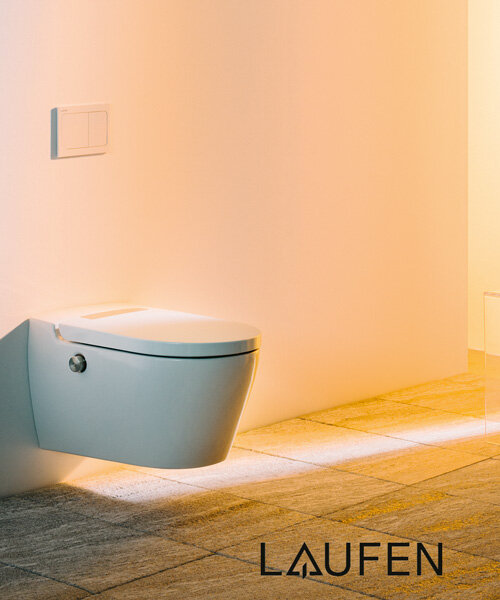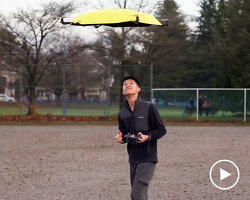how toroidal propellers could impact aerial + marine sectors
First devised by Archimedes in 200 BC, propellers are mechanical devices composed of several blades that rotate at high speed to enable an aircraft or water vehicle to move across a distance. Humans have been optimizing these engines for centuries. Still, changes seem to have plateaued in the last 100 years, pushing several companies and institutions to test out new iterations, known as toroidal propellers, that could revolutionize both aerial and marine sectors — specifically the performance of drones and boats.
The MIT Lincoln Laboratory and US-based company Sharrow Marine took the two most challenging features of traditional rotors– their whining buzz and outdated efficiency — to propose twisted, toroid-shaped propellers that dramatically reduce noise while maximizing performance without energy waste. Here’s how each team designed its models.
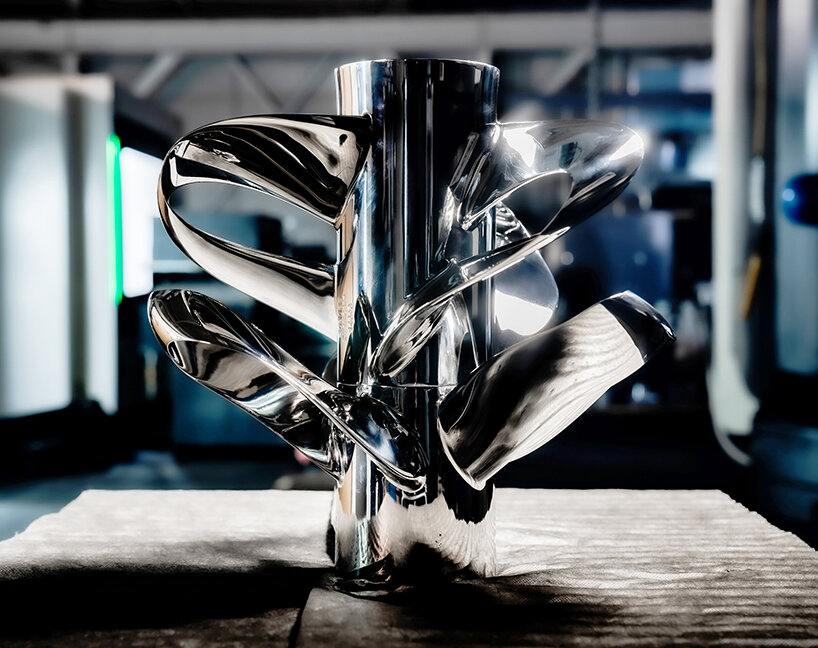
Sharrow MX™ propeller | image courtesy of Sharrow Marine
sharrow marine’s propeller technology
Regarding hydrodynamics, Sharrow Marine has developed a range of propellers that significantly advance rotor technology, which halted after the 1830s. Designed as twisted loops instead of traditional blades, the devices have ‘solved the most basic problem of rotary propulsion. Specifically, tip cavitation and vortices have been eliminated or significantly reduced, transforming your entire boating experience,’ explains the company.
By decreasing and even eliminating tip cavitation and vortices, the Sharrow models also dramatically reduce noise and energy loss when a boat cruises through open waters. Additional benefits include 50% more reverse thrust, 30% more range, less vibration, and doubled speed at mid-range RPMs. Putting its products to the test, Sharrow demonstrates in the below video the dramatic difference in noise production between a standard propeller and its toroidal design.
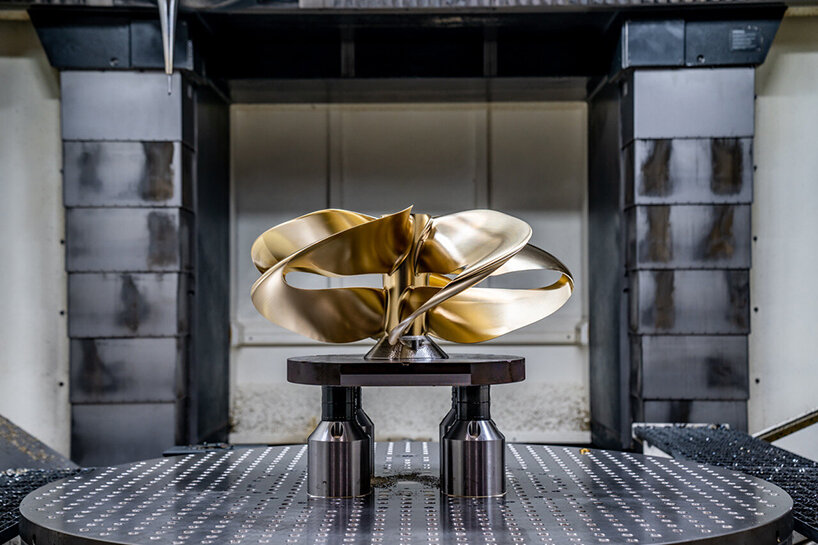
Sharrow NX™ Inboard | image courtesy of Sharrow Marine
The Sharrow MX™ is suitable for 150- 450 HP outboard motors and sterndrives, the Sharrow NX™ is available for inboard applications (25-60in diameter), and the Sharrow CX-1™ Duo Propeller is an exclusive model available to boatbuilders via the company’s own program. Sharrow uses CNC machines to produce its models according to industry-level manufacturing of outboard/inboard motors.
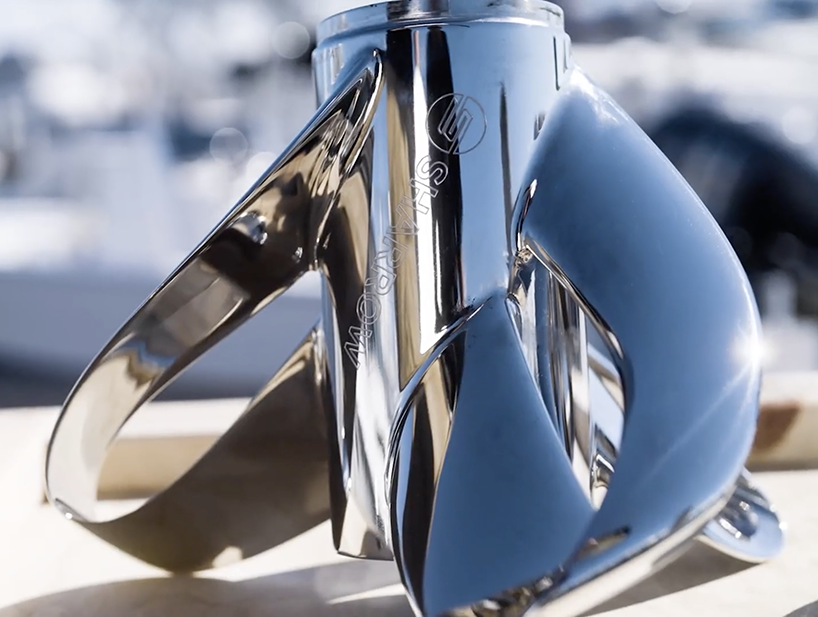
Sharrow CX-1™ Duo Propeller | image courtesy of Sharrow Marine
MIT lincoln laboratory’s winning rotor design for drones
Moving from water to air, a team of researchers at MIT Lincoln Laboratory proposed a toroidal propeller prototype among the 2022 winners of the R&D 100 awards. Built as an enclosed, twisted design, the MIT invention allows multirotor, unpiloted aircraft like drones, known for their pestering buzz, to fly almost noiselessly. ‘By enabling a drone that is less of an acoustic annoyance, this propeller may accelerate the acceptance of such aircraft for a wide range of uses—for example, aerial deliveries, cinematography, industrial or infrastructure inspections, and agricultural monitoring,’ writes the LL MIT team.
The noise-canceling toroidal prototype came about when Dr. Thomas Sebastian, a senior member of the laboratory’s Structural and Thermal-Fluids Engineering Group, tested a silent aircraft powered by ‘ionic wind’. In a recent demonstration video shared on the institution’s Twitter account, Sebastian explains:
‘Propellers, as we know, are pretty loud. And we can look at wings to see how that works. Back when people were coming up with all kinds of crazy ideas for airplanes in the early 1900s and during World War 2, there were a couple of designs that were basically these ring wings. So I wondered what it would look like if you took a ring wing and turned something like that into a propeller. We came up with this initial concept of using a toroidal shape, this annular wing shape, to hopefully make a quieter propeller. I had an intern of mine, who was just absolutely phenomenal, run with the idea. He took the concept and created a bunch of iterations using 3D printers.’
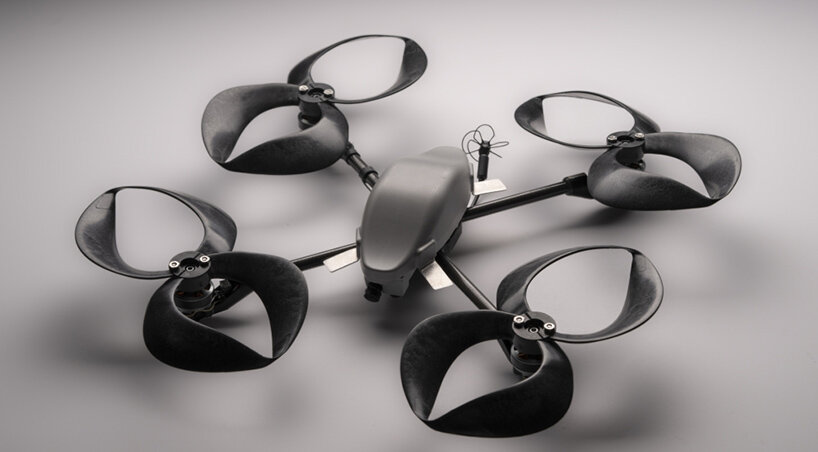
LL MIT’s award-winning toroidal propellers | image © Glen Cooper via MIT Lincoln Laboratory
The result is an incredible reduction in noise, reaching a frequency of 1-5Hz, making the drone’s flying motion sound like a distant woosh rather than a nagging buzz. And the reason behind that is the unusual twisting design that spreads vortices. ‘The key thing that we thought was making the propellers quieter, was the fact that you’re now distributing the vortices that are being generated by the propeller across the whole shape of it, instead of just at the tip. Which then makes it effectively dissipate faster in the atmosphere. That vortex doesn’t propagate as far, so you’re less likely to hear it,‘ continues Sebastian.
While still experimental, the promise of such toroidal propellers could hopefully be dispatched for mass production in commercial aerial services — including aerial deliveries, cinematography, industrial or infrastructure inspections, and agricultural monitoring.

image courtesy of MIT Lincoln Laboratory
The toroidal propeller, one of the Lab’s @RD100Awards winners, has a unique, closed-form propeller design that makes it a significantly quieter alternative to common multirotor propellers on commercial uncrewed aerial vehicles. https://t.co/hgda3NgYIz pic.twitter.com/5XkIxNVPHd
— Lincoln Laboratory (@MITLL) January 6, 2023
